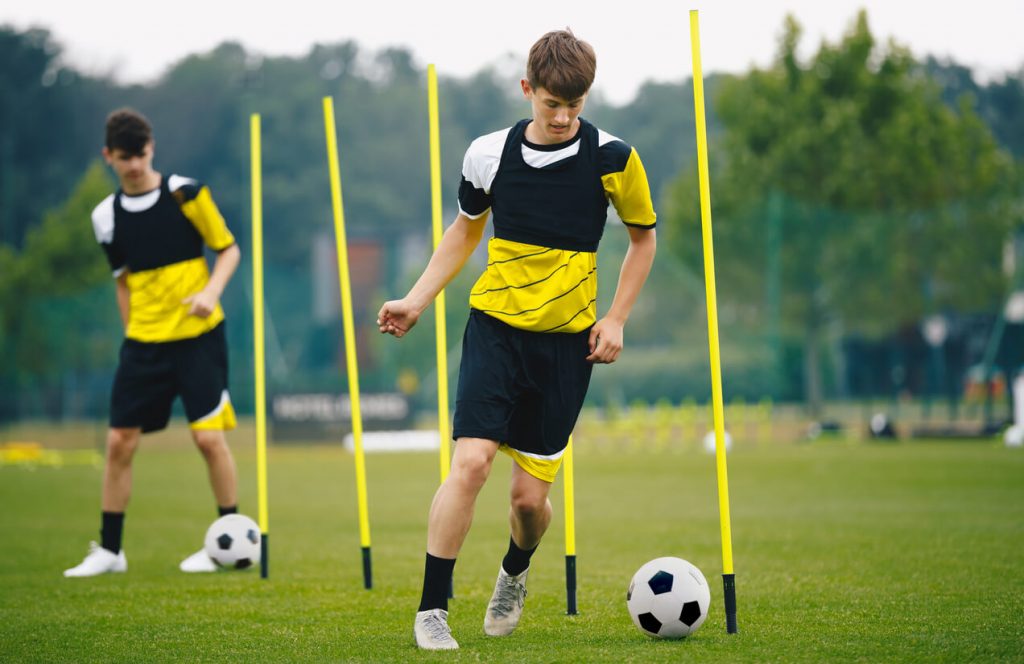Introduction
Welcome to our guide on the best football training gear. Whether you’re a professional athlete or just enjoy playing football as a hobby, having the right training equipment is essential to enhance your skills, stay safe, and get the most out of your practice sessions. In this article, we’ll explore the essential
Essential Football Training Gear
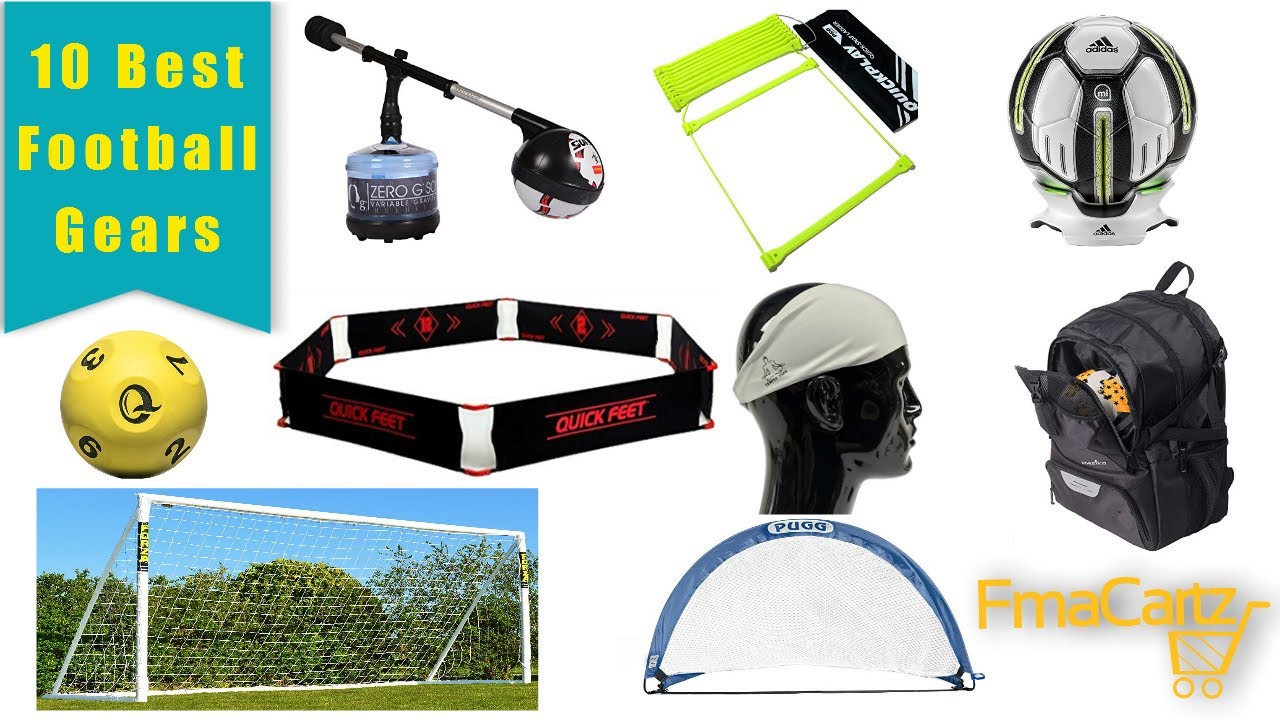
When it comes to football training, having the right gear can make a significant difference in your performance and safety. Here, we’ll discuss the essential
1. Football Boots
Football boots are the foundation of any player’s gear. They provide traction, support, and control on the field. Consider the following when choosing
- Fit: Boots should fit snugly to your feet, providing stability without being too tight.
- Studs: Choose studs suitable for the type of surface you play on (firm ground, soft ground, or artificial turf).
- Material: Leather boots offer durability and comfort, while synthetic materials are lightweight.
2. Training Apparel
Proper training apparel ensures comfort and freedom of movement during practice. Here’s what you need:
- Jersey and Shorts: Choose moisture-wicking materials to keep you dry during intense workouts.
- Socks: Invest in moisture-wicking, cushioned socks that reduce the risk of blisters.
- Compression Gear: Compression shorts or tights can help with muscle support and recovery.
3. Footballs
Quality footballs are essential for honing your skills. Ensure you have a range of footballs for different types of training:
| Type of Ball | Purpose |
|---|---|
| Match Ball | For game-like drills and practice matches. |
| Training Ball | For general training sessions. |
| Mini Ball | For improving ball control and dribbling skills. |
Having a variety of footballs allows you to tailor your training to different aspects of the game.
These essential gear items lay the foundation for your football training. In the next section, we’ll explore additional equipment that can help you take your skills to the next level.
1. Football Boots
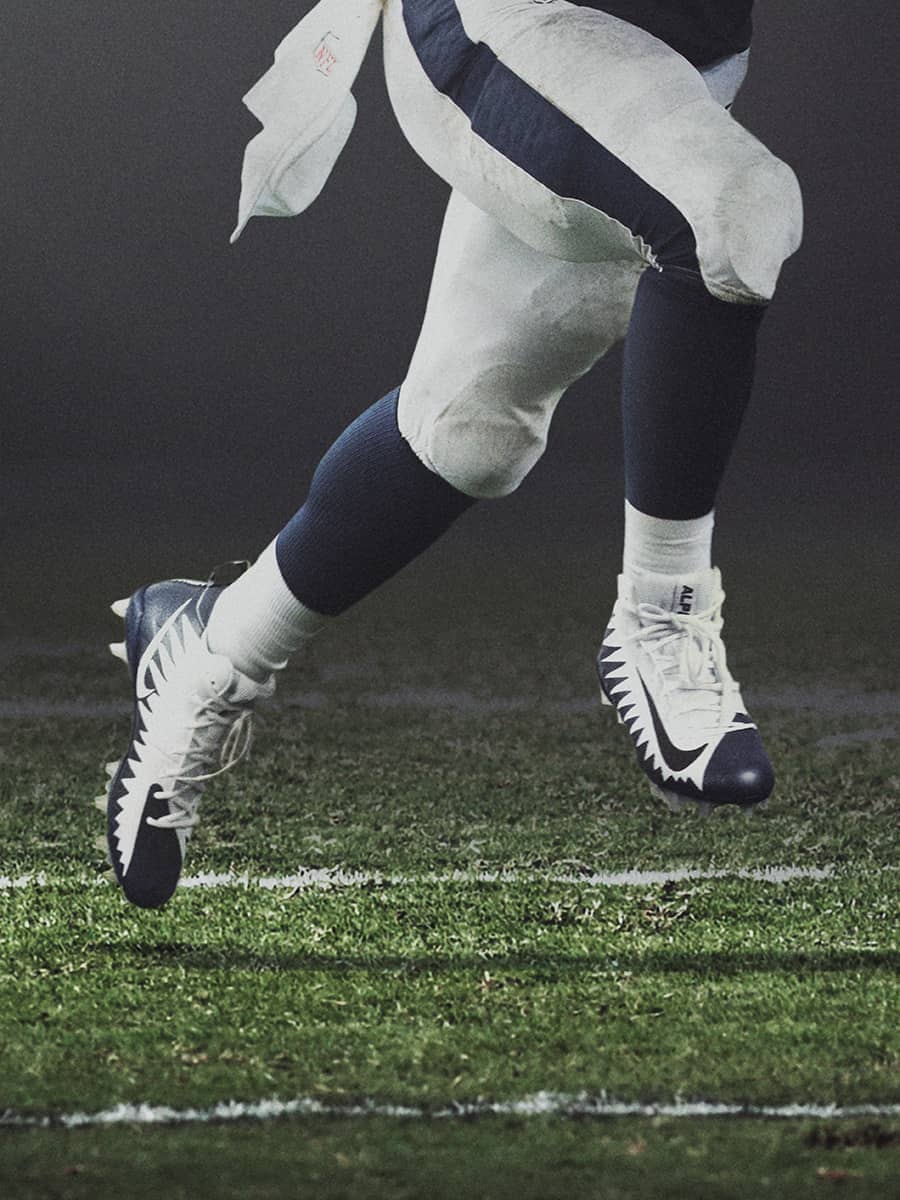
Football boots, also known as soccer cleats in some regions, are arguably the most crucial piece of equipment for any
Choosing the Right Fit
Fit is paramount when selecting football boots. Ill-fitting boots can lead to discomfort, blisters, and even injuries. Consider the following factors when choosing the right fit:
- Size: Boots should fit snugly but not be too tight. Your toes should have some room to move, and your heel should not slip.
- Width: Different brands and models may have varying widths. Ensure the boots match the width of your feet.
- Try Before You Buy: Whenever possible, try on boots in a physical store to ensure they fit correctly.
Stud Configuration
The studs on football boots are designed for specific playing surfaces. Choose the right stud configuration based on the type of field you primarily play on:
- Firm Ground (FG): These boots have conical or bladed studs for natural grass surfaces. They offer stability and traction.
- Soft Ground (SG): SG boots have longer, removable studs designed for wet and muddy fields. They prevent you from sinking into the ground.
- Artificial Ground (AG): AG boots have shorter, evenly distributed studs suitable for artificial turf surfaces.
Material Matters
Football boots come in various materials, each with its advantages:
- Leather: Leather boots are durable and provide a comfortable fit as they mold to your feet over time. They’re an excellent choice for players seeking both quality and longevity.
- Synthetic: Synthetic materials are lightweight and often offer better water resistance. They are a preferred choice for speed-oriented players.
- Knit: Knitted boots offer a sock-like fit and excellent ball control. They are favored by players who prioritize touch and feel.
Remember that personal preference plays a role in choosing the right football boots. Some players prioritize comfort, while others focus on performance attributes. Ultimately, the best football boots for you are the ones that feel comfortable and enhance your game on the pitch.
2. Training Apparel
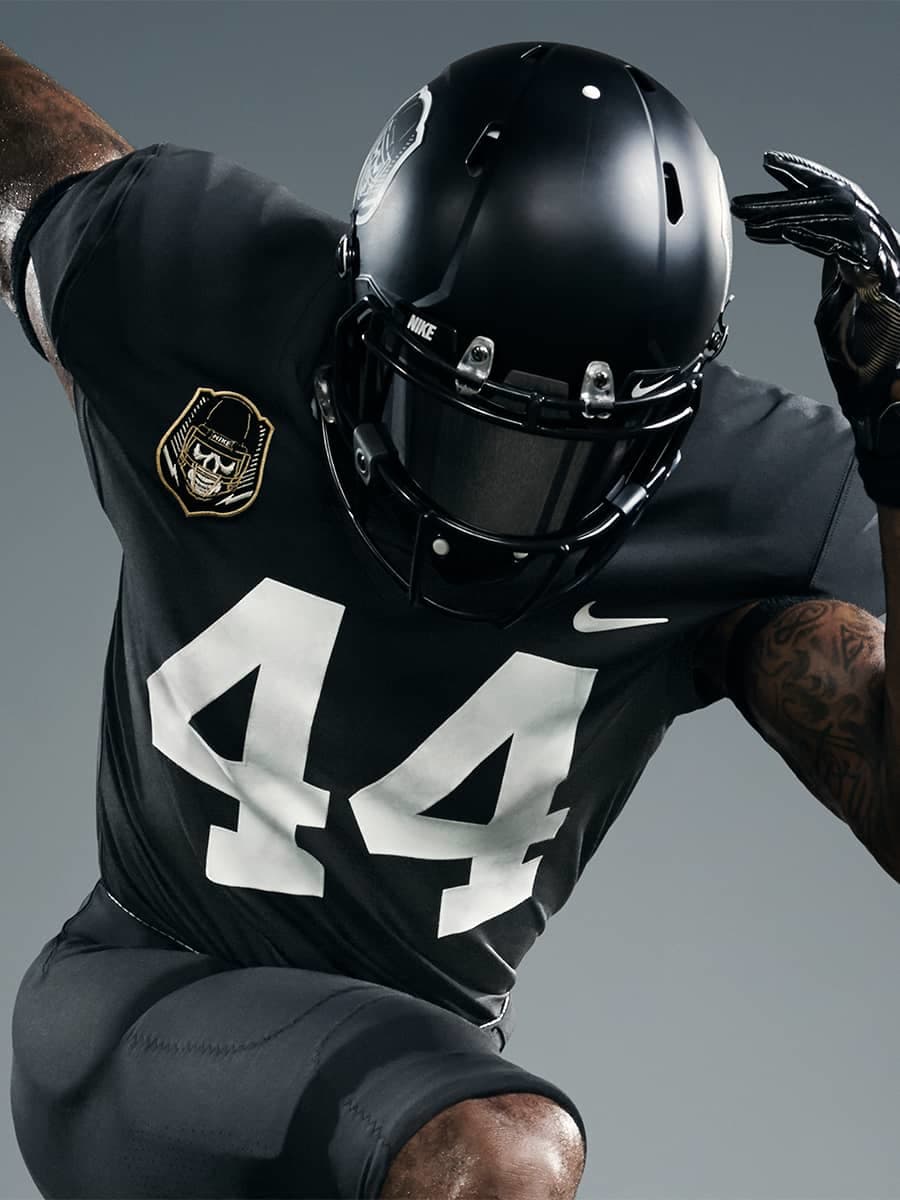
Your choice of training apparel can significantly impact your comfort and performance during football practice. The right clothing should provide freedom of movement, wick away sweat, and keep you focused on your training. Here’s a closer look at essential training apparel for football:
Jersey and Shorts
Jersey and shorts are the core components of your training outfit. Look for these features when selecting them:
- Moisture-Wicking Fabric: Opt for materials that draw sweat away from your skin, keeping you dry even during intense workouts.
- Fit: Your jersey and shorts should fit comfortably without being too loose or too tight, allowing for a full range of motion.
- Design: Choose breathable designs with ventilation panels to help regulate your body temperature.
Socks
Proper football socks can prevent blisters and keep your feet comfortable throughout training sessions. Look for:
- Moisture Management: Socks with moisture-wicking properties can help keep your feet dry and reduce the risk of blisters.
- Cushioning: Cushioned socks provide extra comfort and support during high-impact movements.
- Length: The length of your socks is a matter of personal preference. Some players prefer ankle-length, while others like longer socks that cover the calf.
Compression Gear
Compression gear has gained popularity in football training due to its potential benefits. It can:
- Enhance Circulation: Compression clothing may help improve blood flow, reducing the risk of muscle fatigue.
- Provide Support: Compression shorts or tights offer support to key muscle groups, aiding in injury prevention.
- Reduce Muscle Soreness: Some players find that wearing compression gear can minimize post-training muscle soreness.
Ultimately, your choice of training apparel should prioritize comfort, functionality, and performance. High-quality training apparel will help you stay comfortable and focused during your football training sessions, allowing you to maximize your development as a player.
3. Footballs
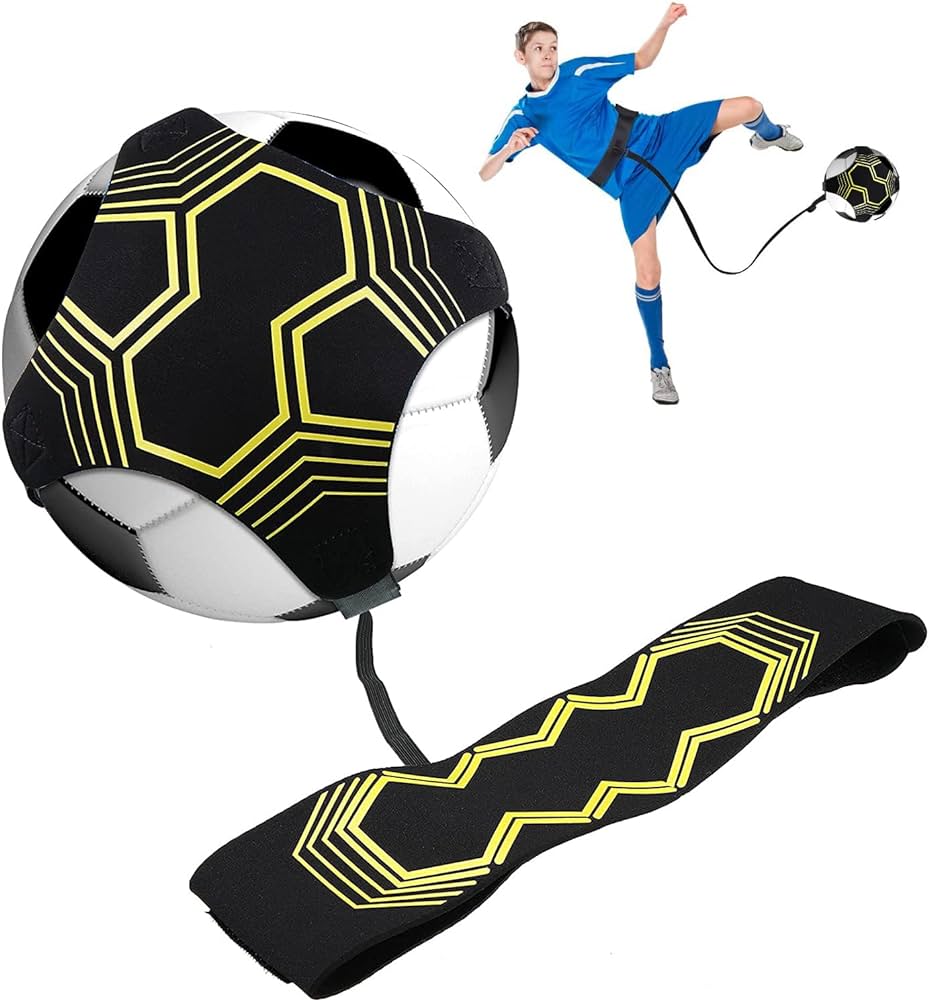
Football is all about mastering control and precision with the ball. To improve your skills, you need access to the right type of footballs for different training scenarios. Here’s a breakdown of the types of footballs you should consider for your training sessions:
| Type of Ball | Purpose |
|---|---|
| Match Ball | Match balls are designed for official games and high-intensity training sessions. They meet strict size and weight regulations set by football governing bodies. Using a match ball in your training can help you get used to its feel and characteristics for important matches. |
| Training Ball | Training balls are more durable and cost-effective for everyday practice. They are designed to withstand rigorous use on various playing surfaces. Training balls are great for honing your skills in passing, shooting, and dribbling. |
| Mini Ball | Mini balls are smaller than regular footballs and are excellent for close control, dribbling, and ball-handling drills. They are also suitable for indoor practice or small-sided games, helping you improve your agility and precision. |
Choosing the Right Size
Football sizes can vary depending on age groups and playing standards. It’s crucial to choose a ball that matches your age and skill level:
- Size 5: The standard size for adults and youth aged 13 and older.
- Size 4: Designed for youth players aged 9 to 12 years old.
- Size 3: Ideal for young children aged 6 to 9 years old.
Using the appropriate ball size ensures a comfortable and safe training experience.
Maintaining Your Footballs
Proper maintenance can prolong the lifespan of your footballs:
- Inflation: Keep your footballs properly inflated according to manufacturer guidelines to maintain their shape and performance.
- Cleaning: Regularly clean your footballs with a damp cloth to remove dirt and debris.
- Storage: Store your footballs indoors in a cool, dry place to prevent damage from extreme weather conditions.
Having a variety of footballs in your training arsenal allows you to tailor your practice to different aspects of the game, helping you become a more well-rounded and skilled football player.
Additional Training Equipment
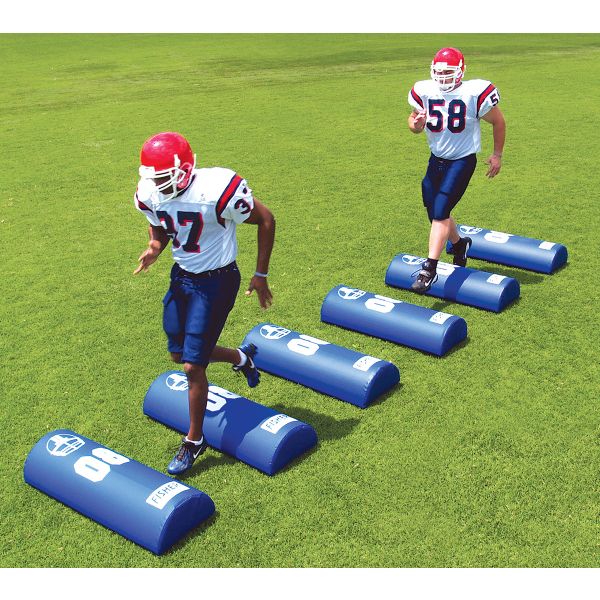
While essential gear like football boots, training apparel, and footballs are the foundation of your football training, there are additional pieces of equipment that can take your skills to the next level. These tools help you target specific areas of your game and enhance your overall performance. Here are some of the must-have additional training equipment:
4. Cones and Markers
Cones and markers are versatile training tools that can be used for a wide range of drills and exercises:
- Dribbling Drills: Set up cones in a zigzag pattern to practice dribbling and ball control.
- Agility Training: Create agility courses to improve your speed, agility, and quickness.
- Passing and Shooting Accuracy: Use markers to set targets for passing and shooting drills.
Cones and markers are affordable and easy to transport, making them essential for any football training session.
5. Agility Ladders
Agility ladders are excellent tools for improving footwork, coordination, and agility:
- Footwork Drills: Perform ladder drills to enhance your foot speed and precision.
- Balance and Coordination: Agility ladder exercises can help improve balance and body control.
- Change of Direction: Work on quick changes of direction, essential for evading defenders.
Agility ladders are highly effective for developing the agility required for football players to navigate the pitch effectively.
6. Resistance Bands
Resistance bands are valuable tools for strength and resistance training:
- Strength Building: Use resistance bands to target specific muscle groups, such as the legs, to improve power and explosiveness.
- Rehabilitation: Bands can be used for rehabilitation exercises to recover from injuries and prevent future ones.
- Warm-Up: Incorporate resistance bands into your warm-up routine to activate key muscles before training.
Resistance bands are versatile and suitable for players of all ages and skill levels.
By incorporating these additional training equipment items into your football training regimen, you can fine-tune your skills and address specific aspects of your game. Whether it’s improving agility, enhancing strength, or refining your ball control, these tools are designed to help you reach your full potential as a football player.
4. Cones and Markers
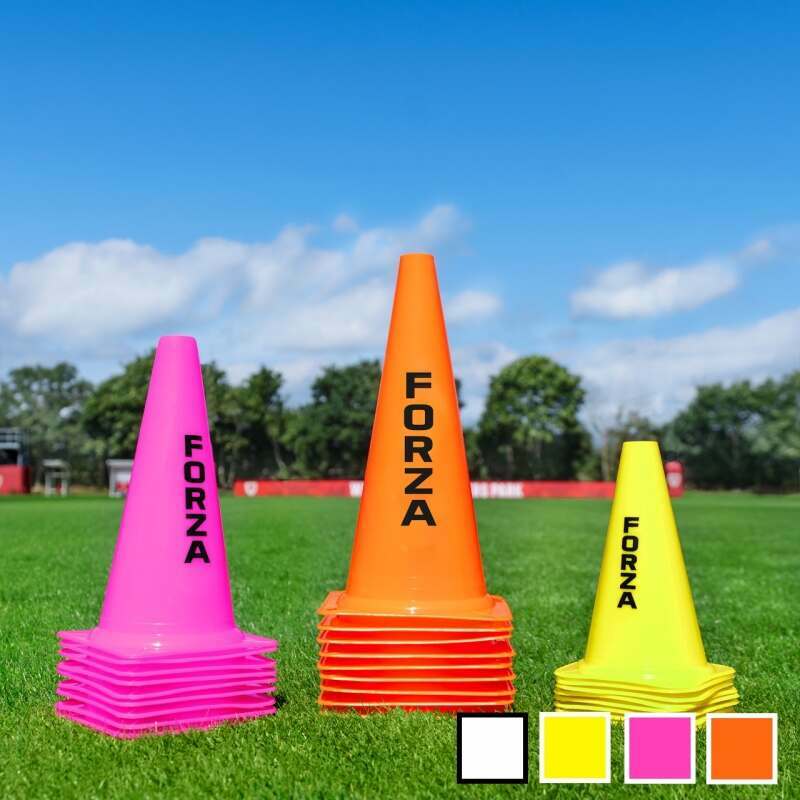
Cones and markers are simple yet indispensable tools for football training. They are versatile and can be used for a wide range of drills and exercises to improve various aspects of your game. Here’s a closer look at how cones and markers can enhance your training sessions:
1. Dribbling Drills
Cones are commonly used to set up dribbling courses that challenge your ball control and close-quarters skills. You can arrange cones in a zigzag pattern or create a slalom course. Dribbling drills help improve your ability to maneuver the ball effectively, especially in tight spaces during matches.
2. Agility Training
Markers placed on the ground can be used to create agility courses. These courses involve quick direction changes, side steps, and diagonal runs. Agility training with markers enhances your speed, agility, and overall footwork, making you more elusive on the field and better equipped to evade defenders.
3. Passing and Shooting Accuracy
Markers are excellent for setting up target zones for passing and shooting drills. By aiming at specific markers, you can work on your accuracy and precision when passing the ball or taking shots on goal. This type of training is essential for playmakers and goal-scorers alike.
4. Defensive Skills
Cones can be used to simulate opponents or obstacles during defensive drills. You can practice defending against dribblers by positioning cones as stand-ins for attacking players. This helps improve your defensive positioning, tackling, and interception skills.
5. Speed and Endurance
Cones can be used to mark intervals for speed and endurance training. You can set up cone markers for sprinting, shuttle runs, or timed drills. These exercises are vital for building your cardiovascular endurance and explosiveness.
6. Tactical Awareness
By strategically positioning cones and markers, you can create visual cues for tactical training. For example, you can use cones to mark zones for pressing, offside lines, or positioning during set pieces. This helps players develop a better understanding of their roles and responsibilities on the field.
Cones and markers are cost-effective, portable, and suitable for players of all ages and skill levels. Whether you’re a beginner looking to develop basic skills or a seasoned professional honing your technique, these simple training tools can play a crucial role in your football development. Incorporating cone and marker drills into your training routine will undoubtedly contribute to your overall improvement as a football player.
5. Agility Ladders
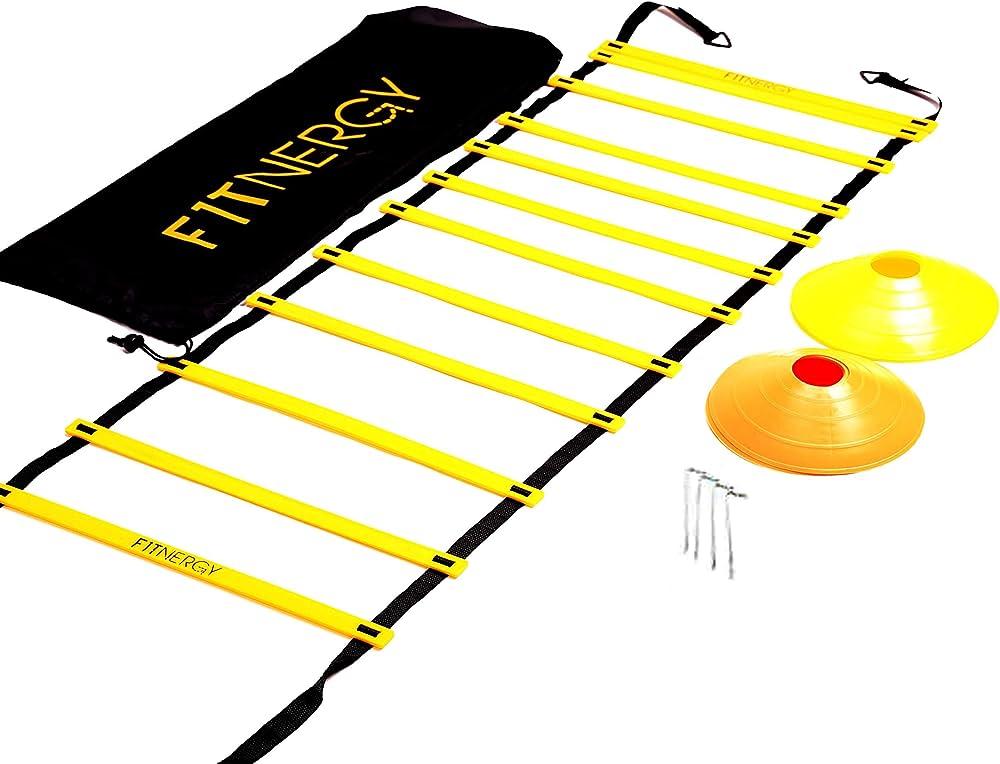
Agility ladders are fundamental tools in football training that help players develop essential skills such as footwork, coordination, agility, and speed. These simple yet effective training aids consist of flat rungs connected by nylon straps and can be laid flat on the ground. Here’s why agility ladders are a valuable addition to your training regimen:
1. Footwork Drills
Agility ladders are known for their ability to enhance footwork. Players perform various footwork drills by moving both feet in and out of the ladder’s rungs in specific patterns. These drills improve a player’s ability to maintain balance, control, and precise foot placement, all crucial elements in football.
2. Coordination and Body Control
Football demands precise coordination and body control. Agility ladders are excellent tools for refining these skills. Players must synchronize their footwork with the ladder’s rhythm, helping them develop better control over their body movements and enhance their overall coordination.
3. Change of Direction
Football players often need to make quick changes of direction on the field, whether to evade opponents or make a sharp turn. Agility ladders are ideal for practicing change of direction drills. These drills mimic in-game scenarios, helping players become more agile and responsive during matches.
4. Speed Training
Speed is a valuable asset for any football player. Agility ladder drills challenge players to move their feet rapidly through the rungs, promoting faster leg turnover and acceleration. Improved speed can be a game-changer in situations where you need to chase down an opponent or sprint towards the goal.
5. Versatility
Agility ladders are highly versatile training tools. You can create numerous drill variations to target specific areas of your game. Whether it’s lateral movements, diagonal runs, or quick shuffles, agility ladder exercises can be customized to suit your training objectives.
6. Injury Prevention
Regular agility ladder training helps strengthen the muscles around your knees and ankles, reducing the risk of injuries like sprains and strains. Stronger leg muscles provide better support and stability during gameplay.
Integrating agility ladder drills into your training routine is relatively easy. You can use them as part of your warm-up to prepare your muscles and joints for more intense training or incorporate them into your agility and speed-focused sessions. Whether you’re a beginner or an advanced player, agility ladders can play a significant role in enhancing your football skills and physical attributes.
6. Resistance Bands
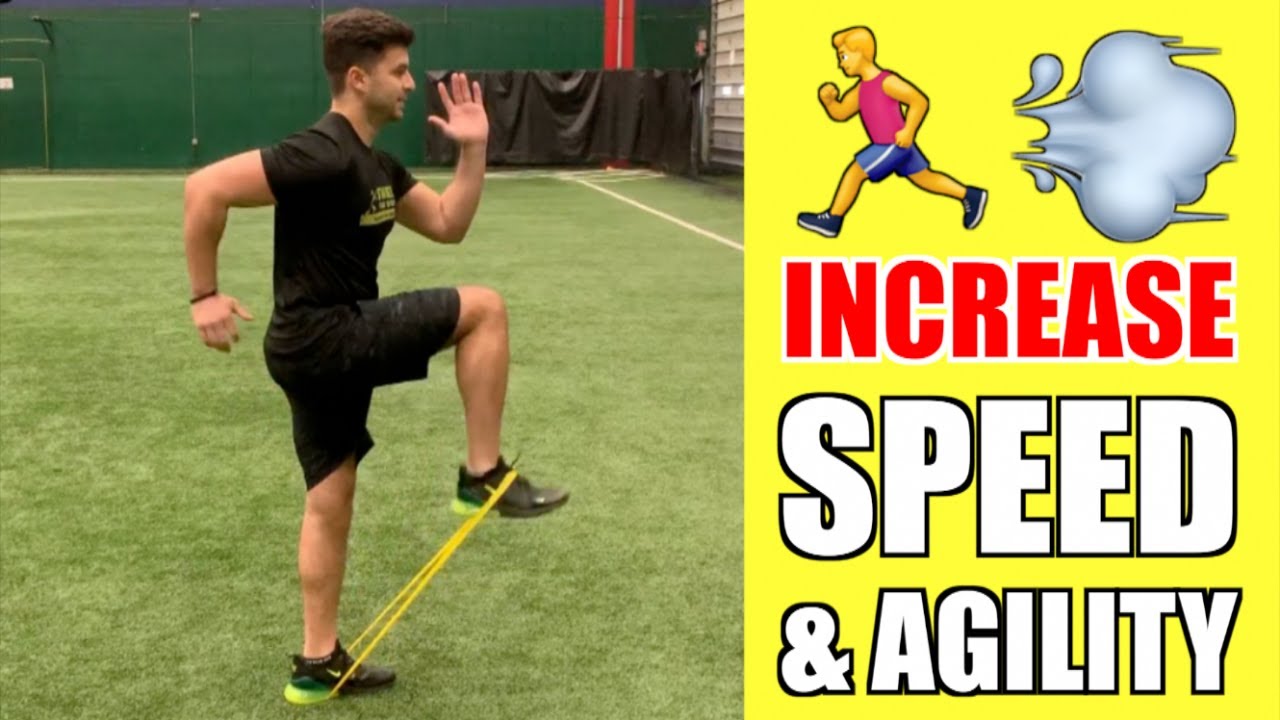
Resistance bands have become essential tools in modern football training programs, thanks to their versatility and effectiveness in improving strength, flexibility, and overall performance. Here’s a comprehensive look at how resistance bands can benefit football players:
1. Strength Building
One of the primary uses of resistance bands in football training is strength building. These bands provide variable resistance, meaning the resistance increases as you stretch the band. This makes them highly effective for strengthening various muscle groups, including the legs, core, and upper body. Football players can use resistance bands for exercises like squats, leg lifts, and chest presses to develop the strength required for tackling, shooting, and holding off opponents.
2. Speed and Explosiveness
Football is a game of explosive movements and quick bursts of speed. Resistance bands can be incorporated into agility and speed drills to enhance speed and explosiveness. For instance, players can use bands during sprinting exercises to increase resistance, requiring more power and effort to accelerate. This translates to improved sprinting speed and the ability to beat opponents to the ball.
3. Flexibility and Range of Motion
Football players need good flexibility and range of motion to perform various skills and movements on the field. Resistance bands can assist with stretching exercises, helping players increase their flexibility and maintain a healthy range of motion. This can reduce the risk of muscle strains and injuries during matches.
4. Injury Prevention and Rehabilitation
Resistance bands are valuable tools for injury prevention and rehabilitation. They can be used for prehabilitation exercises to strengthen muscles and joints, reducing the risk of injuries. Additionally, bands are often used in rehabilitation programs to help players recover from injuries and regain strength and mobility.
5. Core Stability
A strong core is essential for football players to maintain balance, stability, and control during matches. Resistance bands can be employed in core-strengthening exercises, such as planks with band resistance or Russian twists, to improve core stability and prevent injuries related to poor balance.
6. Portability and Convenience
One of the advantages of resistance bands is their portability and convenience. Players can easily carry them to training sessions or matches and incorporate resistance band exercises into their warm-up or cool-down routines. This makes them accessible for both individual and team training.
Incorporating resistance bands into your football training regimen can yield significant benefits for players of all skill levels. Whether you’re working on strength, speed, flexibility, or injury prevention, these versatile bands offer a cost-effective and efficient way to enhance your performance on the football pitch.
Advanced Training Gear
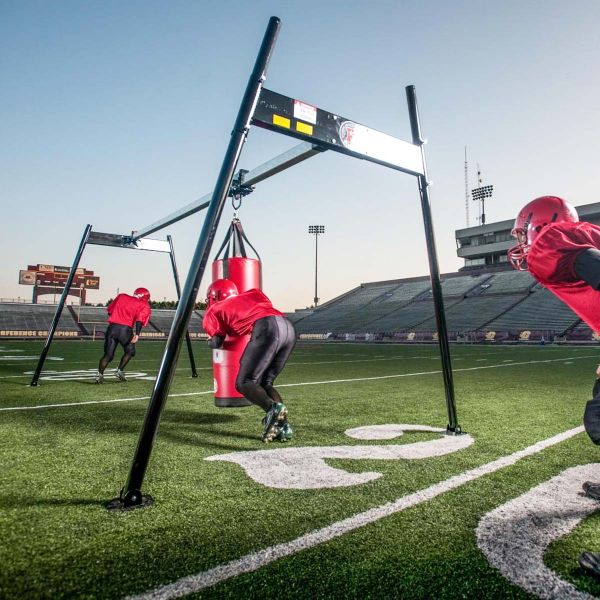
For football enthusiasts who are serious about taking their skills to the next level, advanced training gear offers cutting-edge technology and innovative tools to fine-tune their game. These high-tech gadgets can provide valuable insights and help players reach their full potential. Let’s explore some of the advanced training gear that can elevate your football performance:
7. GPS Trackers
GPS trackers have revolutionized the way football players monitor and analyze their performance. These small devices are often worn in a vest or shirt and provide data on player movements, distances covered, speeds reached, and more. The information collected by GPS trackers can be used to:
- Optimize Conditioning: Coaches can analyze player data to tailor conditioning programs and ensure players are in peak physical condition.
- Monitor Workload: Tracking workload helps prevent overtraining and reduce the risk of injuries.
- Improve Tactical Understanding: Analyzing player positioning and movement during matches can lead to more effective tactical strategies.
8. Smart Footballs
Smart footballs are equipped with sensors and technology to provide real-time data on ball velocity, spin, trajectory, and accuracy. These footballs are ideal for players looking to perfect their passing and shooting skills. Smart footballs can also be used for:
- Consistency: Analyzing data from smart footballs can help players maintain consistent ball control and precision.
- Training Games: Various training games and challenges can be designed around smart football data to make practice sessions more engaging.
- Goalkeeper Training: Smart footballs can be a valuable tool for goalkeepers to improve their reaction time and shot-stopping abilities.
9. Virtual Reality (VR)
Virtual reality (VR) technology is increasingly used for football training. Players can wear VR headsets to immerse themselves in simulated match scenarios or practice situations. VR training can:
- Improve Decision-Making: VR simulations challenge players to make split-second decisions, enhancing their on-field decision-making skills.
- Enhance Visualization: Visualizing plays and tactics in a VR environment can help players understand and execute strategies more effectively.
- Injury Rehabilitation: VR can be used for injury rehabilitation by providing a controlled and safe environment for exercises.
Advanced training gear offers a new dimension to football training, allowing players and coaches to access data and experiences that were previously unavailable. While these technologies are more commonly found at professional levels, they are becoming increasingly accessible to ambitious players looking to gain a competitive edge.
7. GPS Trackers
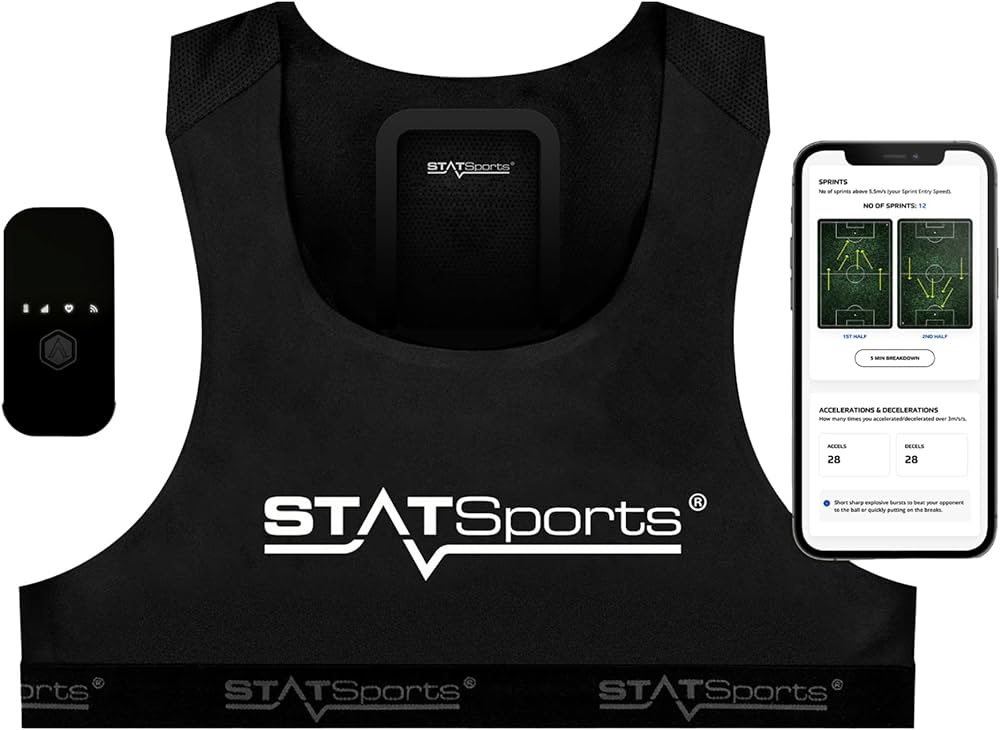
GPS trackers have become indispensable tools for football training and performance analysis. These small, wearable devices are equipped with GPS technology and sensors that collect valuable data on a player’s movements, positioning, and physical performance during training sessions and matches. Here’s a closer look at how GPS trackers are transforming football training:
1. Performance Monitoring
GPS trackers provide real-time data on a player’s performance metrics, including distance covered, speed, sprints, and acceleration. This information allows coaches and players to track performance improvements, set goals, and identify areas that need attention.
2. Tactical Insights
GPS trackers offer tactical insights by recording a player’s positioning and movement patterns during matches. Coaches can use this data to analyze team formations, player positioning, and movement off the ball. It helps teams refine their strategies and optimize player roles.
3. Injury Prevention
Monitoring player workload with GPS trackers is crucial for injury prevention. By tracking metrics like distance run and intensity, coaches can ensure that players do not exceed their physical limits, reducing the risk of overuse injuries.
4. Conditioning Programs
GPS data assists coaches in designing individualized conditioning programs. It allows for tailored training sessions that address a player’s specific needs, whether it’s improving speed, endurance, or agility.
5. In-Game Analysis
During matches, GPS trackers provide in-game analysis. Coaches and analysts can monitor player performance, track fatigue levels, and make informed decisions about substitutions and tactics based on real-time data.
6. Player Development
GPS trackers are valuable tools for player development. By analyzing historical data, coaches can identify areas where individual players need improvement and provide targeted training regimens to help them reach their potential.
7. Goalkeeper Insights
GPS trackers are not limited to outfield players. Goalkeepers can benefit from these devices as well. Tracking metrics such as goalkeeper positioning, diving distances, and reaction times can help goalkeepers refine their skills and decision-making.
GPS trackers have democratized performance analysis in football, making technology that was once reserved for top-level professionals accessible to teams and players at various levels. With the ability to track, analyze, and optimize performance, GPS trackers are now a fundamental part of modern football training and strategy.
8. Smart Footballs
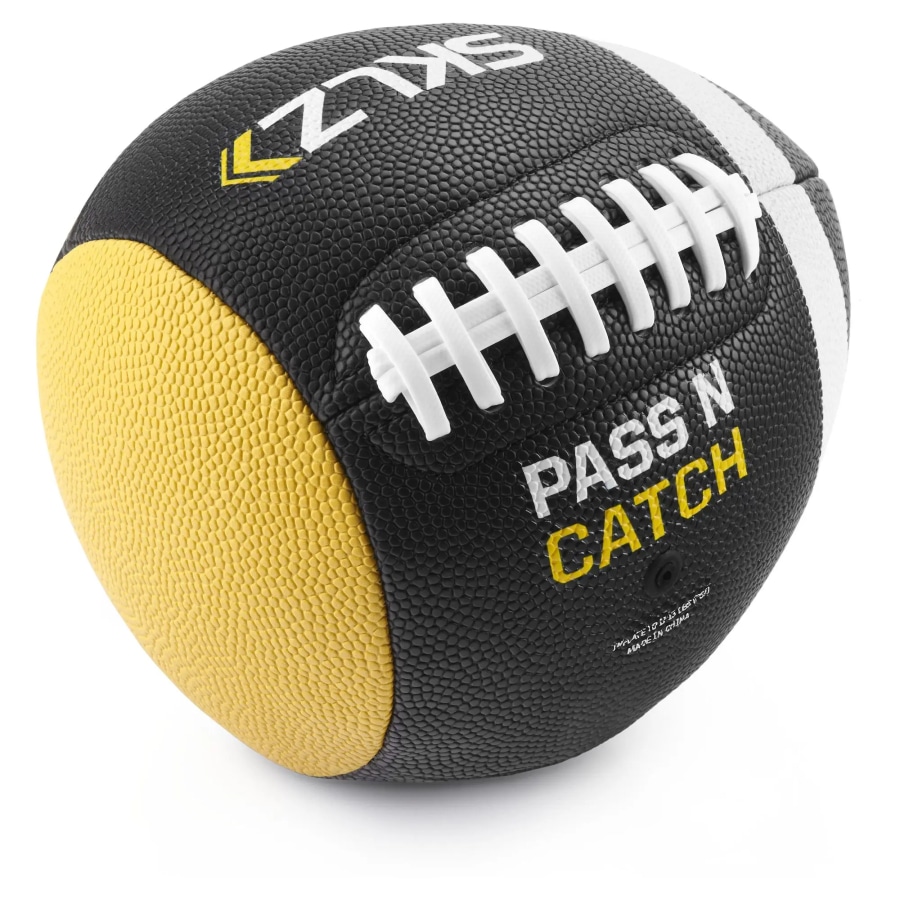
Smart footballs represent the fusion of traditional footballs with cutting-edge technology. These innovative training tools are equipped with sensors and tracking technology that provide real-time data on ball performance. Smart footballs offer a range of benefits for players looking to refine their skills and gain a deeper understanding of their game:
1. Ball Data Analysis
Smart footballs capture a wealth of data, including velocity, spin rate, trajectory, and accuracy. This data is transmitted to a mobile app or device, allowing players and coaches to analyze and interpret ball behavior during training sessions.
2. Passing and Shooting Precision
Smart footballs are particularly valuable for players looking to improve their passing and shooting precision. By tracking the trajectory and accuracy of each pass or shot, players can adjust their technique and work on consistency.
3. Real-Time Feedback
During training sessions, smart footballs provide real-time feedback. This instant feedback enables players to make quick adjustments and refine their skills on the spot. It’s a valuable tool for goalkeepers aiming to improve their reaction time.
4. Consistency in Training
Players can use smart footballs to maintain consistency in their training routines. By reviewing historical data, they can track their progress over time and ensure they are consistently achieving their goals.
5. Training Games and Challenges
Smart footballs can be used to create training games and challenges. For example, players can compete in accuracy challenges or practice crossing and long-range passing with specific accuracy targets.
6. Goalkeeper Training
Goalkeepers can benefit from smart footballs as well. Tracking the trajectory and speed of shots helps goalkeepers improve their reaction time and shot-stopping abilities. It’s also useful for practicing distribution with accuracy.
7. Team Strategy
Coaches and analysts can use smart football data to refine team strategies. Understanding how the ball behaves in various conditions and during different plays can lead to more effective set pieces, corner kicks, and tactical decisions.
Smart footballs are an excellent addition to any football training program, whether you’re a beginner or a professional player. They provide an unprecedented level of insight into ball behavior, helping players fine-tune their skills and gain a competitive edge on the field. With the integration of technology into football, these smart footballs are becoming increasingly popular among players and coaches who seek to elevate their game.
George Pickens block at the end ???????? pic.twitter.com/eTQuNf3b3z
— Warren Sharp (@SharpFootball) September 25, 2023
FAQ
Here are some frequently asked questions about football training gear:
1. Are football boots the same as soccer cleats?
Yes, football boots and soccer cleats are essentially the same. The term “football boots” is commonly used in Europe, while “soccer cleats” is the preferred term in North America. They refer to the footwear designed for playing football (soccer).
2. What’s the difference between firm ground (FG) and soft ground (SG) football boots?
Firm ground (FG) boots have studs designed for natural grass surfaces and offer stability and traction. Soft ground (SG) boots have longer, removable studs intended for wet and muddy fields to prevent players from sinking into the ground.
3. How do I choose the right size for football boots?
When choosing football boots, opt for a snug fit without being too tight. Ensure your toes have some room to move, and your heel doesn’t slip. Sizes can vary between brands, so it’s best to try them on before purchasing whenever possible.
4. What’s the advantage of using resistance bands in football training?
Resistance bands are versatile tools that can help improve strength, speed, flexibility, and injury prevention. They provide variable resistance, making them effective for targeting specific muscle groups and improving overall performance.
5. Can GPS trackers be used for individual training?
Yes, GPS trackers can be used for individual training. Players can wear GPS vests during solo training sessions to monitor their performance metrics, track progress, and set personal goals.
6. How do smart footballs help improve passing accuracy?
Smart footballs provide real-time data on ball velocity, spin, and trajectory. By analyzing this data, players can make adjustments to their passing technique and work on improving the accuracy and consistency of their passes.
7. Are smart footballs suitable for goalkeeper training?
Yes, smart footballs are valuable tools for goalkeeper training. They help goalkeepers improve their reaction time, shot-stopping abilities, and distribution accuracy by tracking the trajectory and speed of shots.
8. Can I use agility ladders for speed training?
Yes, agility ladders are excellent for speed training. They help improve footwork, coordination, and agility, which are essential for accelerating quickly and reaching top speed on the field.
Conclusion
In conclusion, investing in the right football training gear is essential for players of all levels looking to enhance their skills and performance on the field. From the fundamental essentials like football boots and training apparel to advanced tools like GPS trackers and smart footballs, each piece of gear plays a crucial role in a player’s development. Here’s a brief summary of key takeaways:
- Football Boots: Choose the right type and size to optimize comfort and performance on different playing surfaces.
- Training Apparel: Prioritize comfort and functionality with moisture-wicking materials and proper fit.
- Footballs: Select the appropriate size and type for your training needs, whether it’s match balls, training balls, or mini balls.
- Additional Training Equipment: Consider cones, markers, agility ladders, and resistance bands to target specific aspects of your game and enhance your skills.
- Advanced Training Gear: Embrace technology with GPS trackers and smart footballs to gain insights into your performance and refine your techniques.
Ultimately, the right combination of gear can help you build strength, speed, agility, and tactical awareness. It can also reduce the risk of injuries and provide a competitive edge on the football pitch.
Remember that while gear is essential, consistent practice, dedication, and a passion for the game are equally crucial for success in football. So, equip yourself with the best tools, put in the hard work, and enjoy the beautiful game!
